The Yanks Air Museum is located in Chino, California. In 1973, this collection of aircraft began with the acquisition of the Beech Staggerwing and since then the museum has acquired more than 200 aircraft. Many of the aircraft displayed at the museum are one-of-a-kind (usually meaning the last remaining example) and most of them can be flown (notice the dip pans under the airplanes).
JN-4D Jenny
The Jenny was the first mass produced aircraft with interchangeable parts. According to the Museum display:
“The basic Army trainer for WWI, 95% of American and Canadian pilots trained in a Jenny. In 1916, the Jenny was also used to follow Poncho Villa throughout the Mexican countryside. After WWI the surplus Jennys brought aviation to the people as a great beginner ‘flying machine’.”
The Jenny had a top speed of 75 mph and a range of 267 miles. It could cruise at 60 mph.
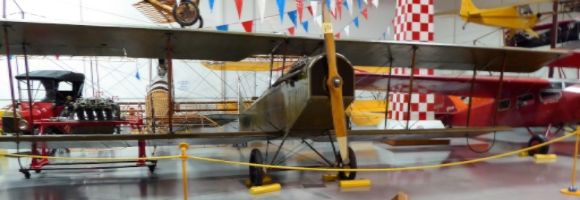
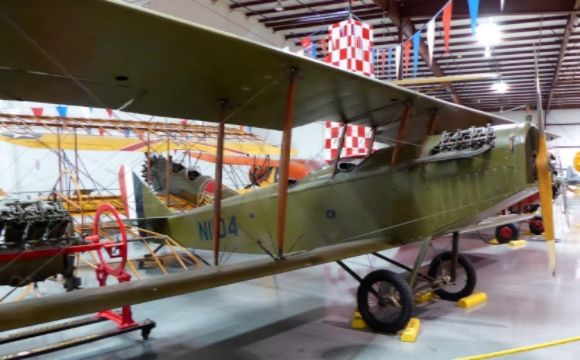
Standard J-1
Like the Jenny, the J-1 was a two-seat trainer designed by Charles Day. It has a top speed of 72 mph and a range of 235 miles. According to the Museum display:
“With the Jenny, the J-1 was a popular aircraft during the heyday of the barnstormers. However, the Air Commerce Act of 1926 ruled that passenger aircraft could not be built of wood, and grounded them all. This resulted in the destruction of all but a few of the J-1s.”
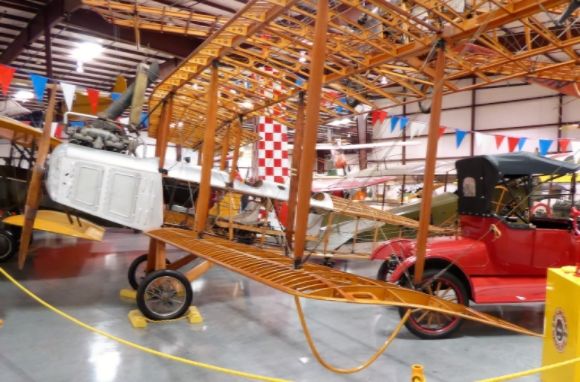
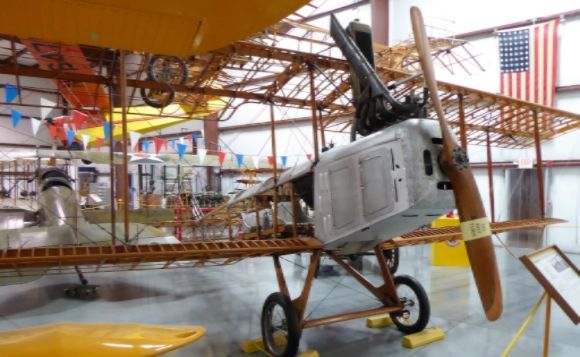
S-4C Scout
This single seat, open cockpit trainer biplane was first produced in 1918. It has a top speed of 95 mph, can cruise at 75 mph, and has a range 250 miles. Known as the Tommy, the plane was designed by B.D. Thomas. A total of 550 were built.
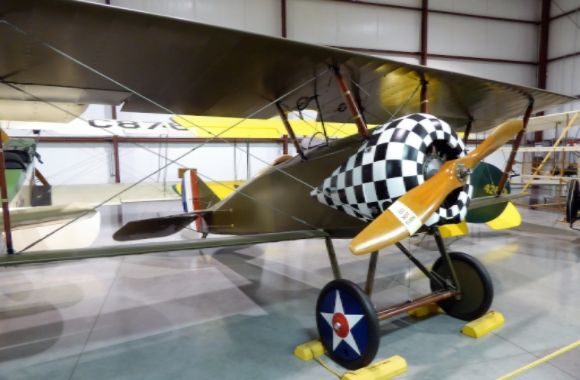
YPT-9B Cloudboy
This two-seat trainer was originally produced for the Army in 1930. It had a top speed of 120 miles per hour and a range of 500 miles. It could cruise at 100 mph.
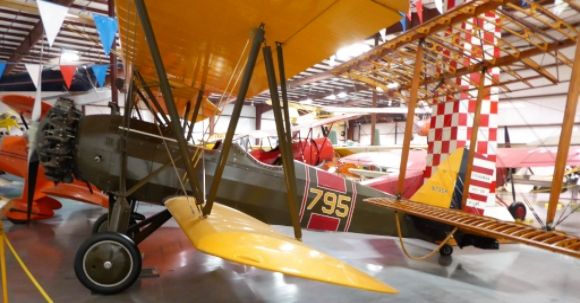
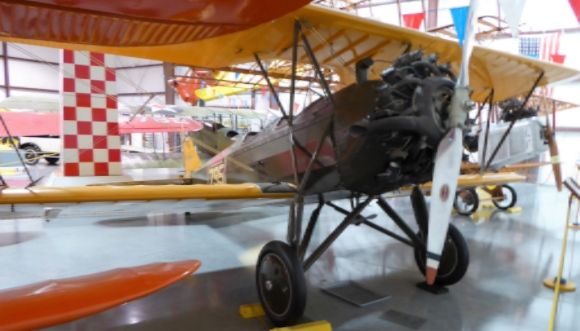
UEC
This is a four-seat light cabin biplane. The UEC was produced by the Weaver Aircraft Company (WACO) of Ohio. This aircraft was first produced in 1932. It has a top speed of 133 mph, a cruising speed of 117, and a range of 450 miles. A total of 45 of these aircraft were built. The UEC was considered to be a reliable, economical aircraft.
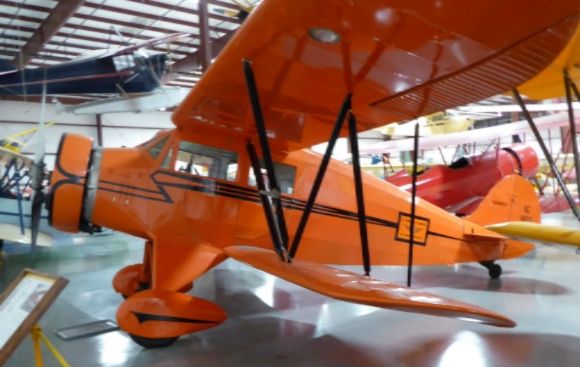
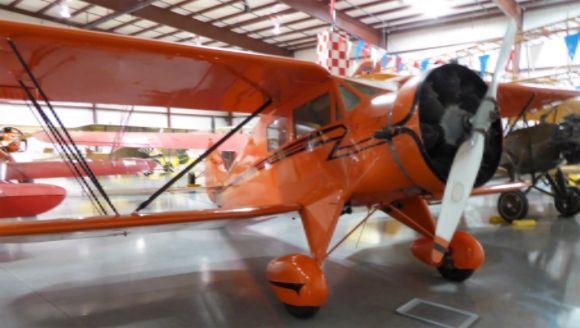
Command-Aire C-3-C
This is a three-set, open cockpit, sport biplane which was first produced in 1928. It had a top speed of 110 mph, could cruise at 92 mph, and had a range of 450 miles. According the Museum display:
“The Command-Aire is the most stable and most pleasant airplane to fly of all the biplanes of the 1920’s. Some early flight instructors did not think it was a good plane for training students because it was too easy to fly!”
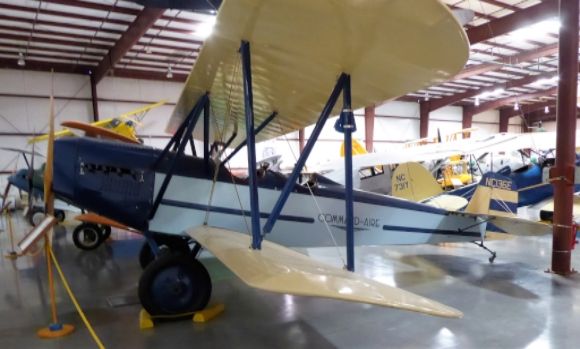
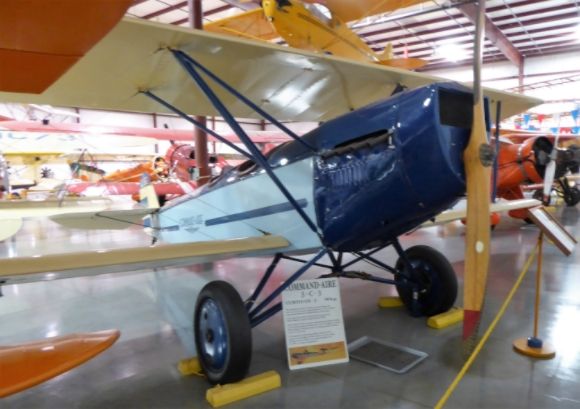
Challenger C-2 (KR-31)
This three-seat open cockpit biplane was first manufactured in 1927. It had a top speed and a cruising speed of 98 mph and a range of 340 miles.
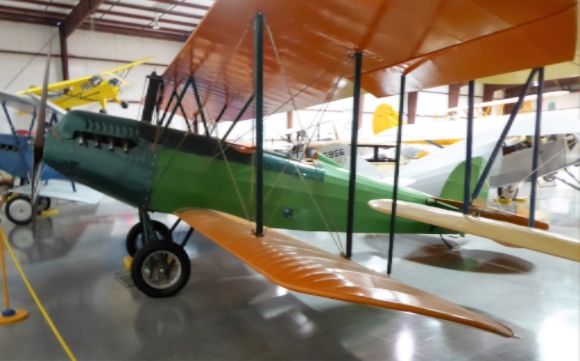
Travel Air 2000
This three-seat open cockpit biplane was first produced in 1928. It had a top speed of 100 mph, could cruise at 85 mph, and had a range of 425 miles.
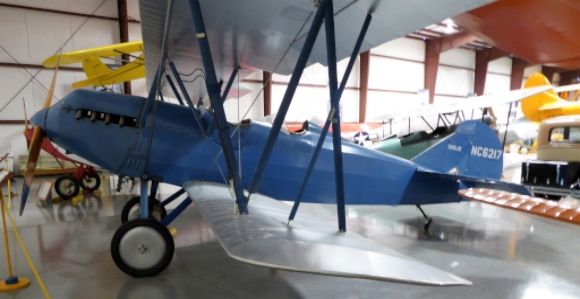
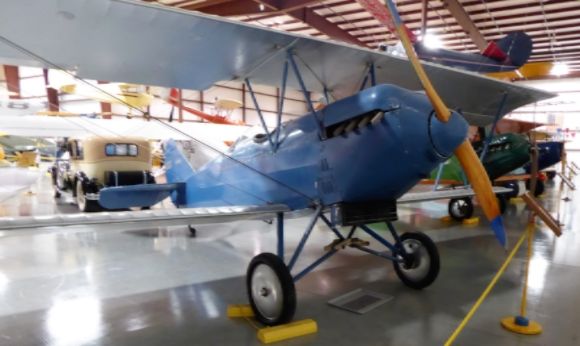
DH-60 GM Gipsy Moth
This two-seat open cockpit sport biplane was first produced in the U.S. in 1929. It had a top speed of 117 mph, could cruise at 85 mph, and had a range of 320 miles. A total of 168 of these planes were built in the U.S. and more than 1,000 were built in Britain.
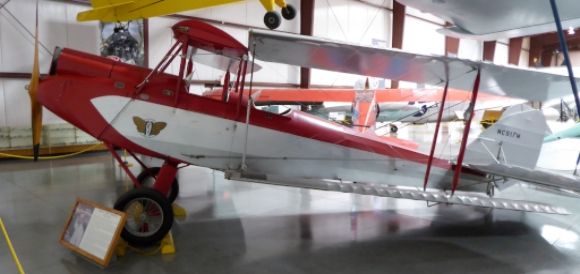
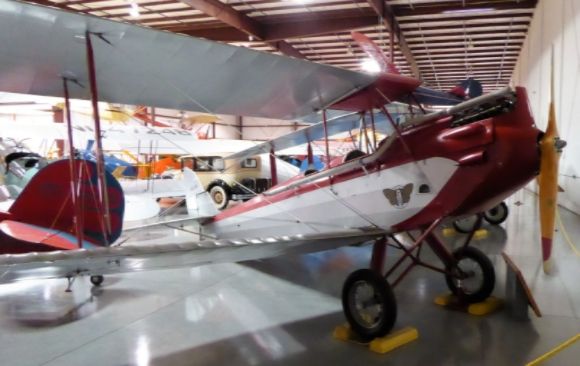
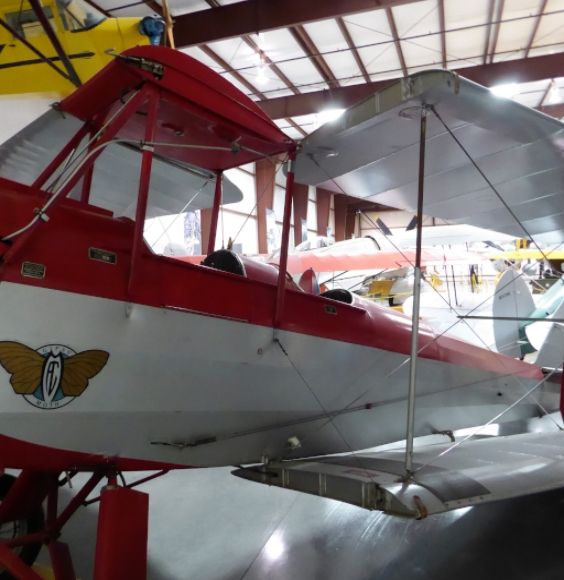
Waco GXE
First produced in 1927, this three-seat open cockpit biplane had a top speed of 96 mph, could cruise at 84 mph, and had a range of 385 miles. More than 1,600 of these aircraft were built. Passengers sat side-by-side in the front seat.
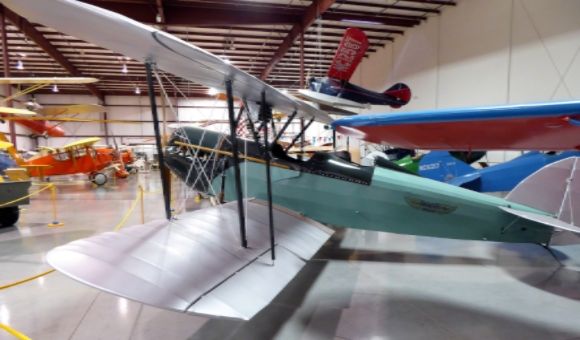
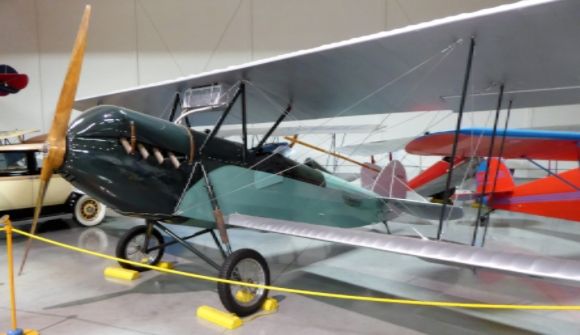
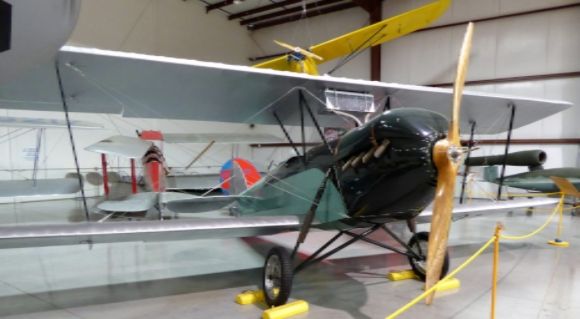
Bird BK
This three-seat open cockpit light sport biplane was first produced in 1929. It had a top speed of 110 mph, could cruise at 92 mph, and had a range of 500 miles. This aircraft was a favorite of women pilots. A total of 75 were built.
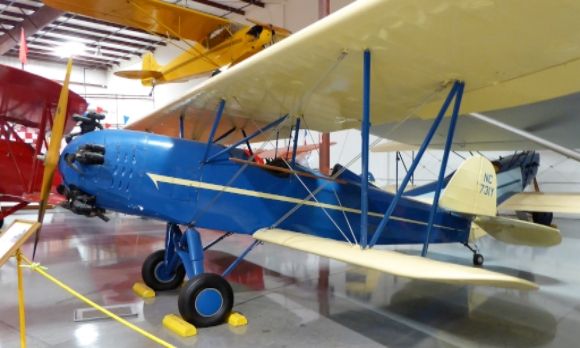
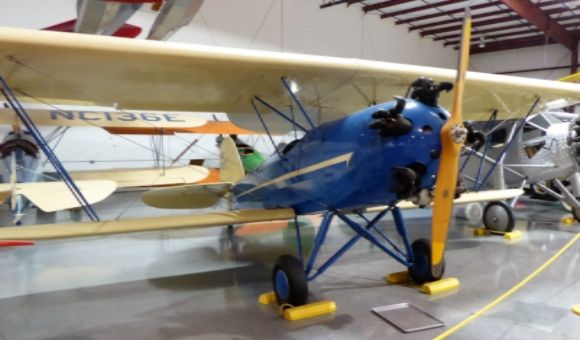
4-D Junior Mail
This three-seat open cockpit biplane was first manufactured by Stearman in 1930. It has a top speed of 145 mph, could cruise at 120 mph, and had a range of 720 miles. The 4-D was used by Western Air Express. A total of 8 aircraft were produced.
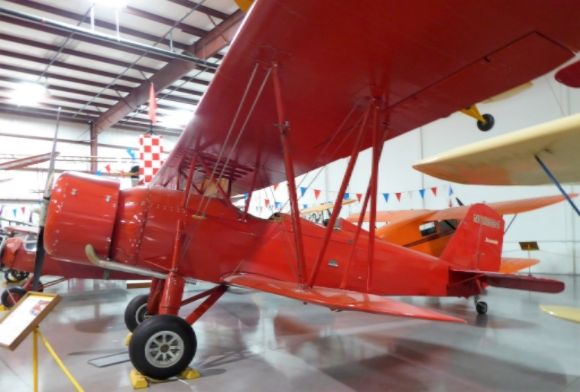
Model 7B (Fawn Mk I)
This two-seat, open cockpit trainer was first produced in 1930. It has a top speed of 115 mph, can cruise at 95 mph, and has a range of 300 miles. A total of 71 were built. This aircraft was a favorite of flying schools.
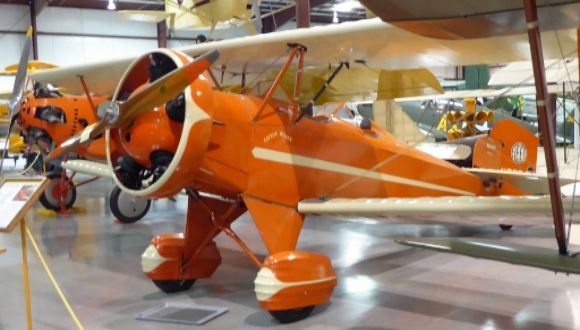
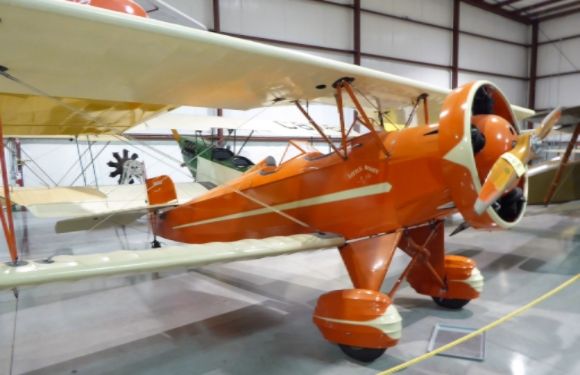
Pigeon Flying Boat
This unique aircraft—only one was built—was first produced in 1920. It has a top speed of 76 mph, and can cruise at 55 mph. This flying boat was built for Reginald de Noyes Thomas, a WWI naval aviator and director of the Thomas-Pigeon Aeroplane Corporation of Boston, Massachusetts.
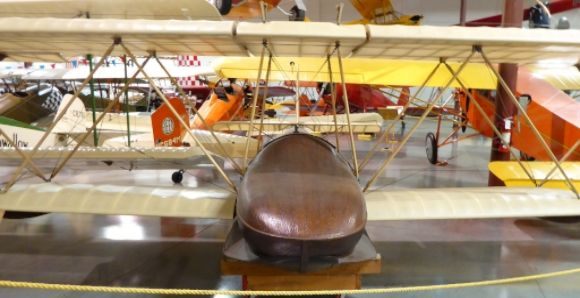
Swallow TP (Training Plane)
This two-seat, open cockpit light sport biplane was first produced by the Swallow Airplane Co. in 1928. It has a top speed of 90 mph, can cruise at 75 mph, and has a range of 300 miles. A total of 200 were built.
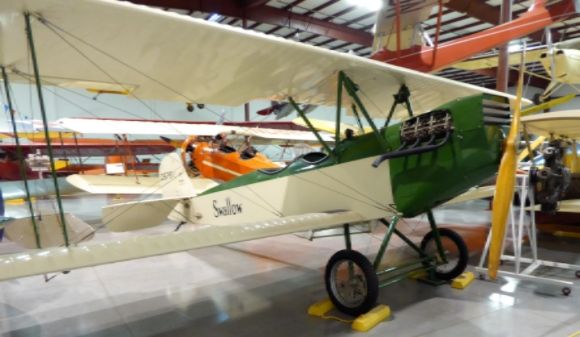
American Eagle A-1
This three-seat open cockpit light sport biplane was first produced in 1927. It has a top speed of 99 mph, can cruise at 85 mph, and has a range of 385-425 miles. A total of 100 of these aircraft were built. This plane originally sold for $2,815.
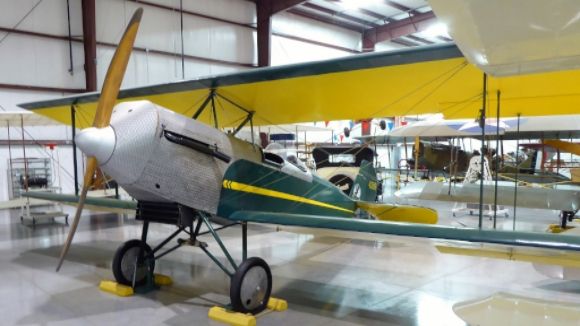
UC-43B Staggerwing
This five-passenger transport was first produced by Beech Aircraft Co. in 1932. It has a top speed of 250 mph, a cruising speed of 212 mph, and a range of 500 miles. A total of 151 of these aircraft were built. Only the wealthy could afford to own a Staggerwing.
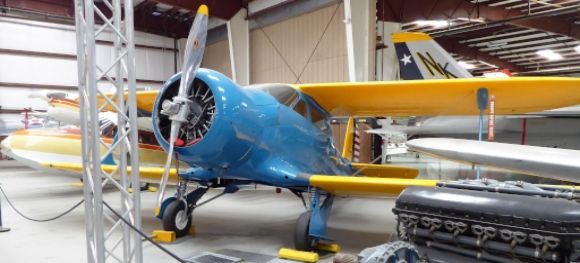
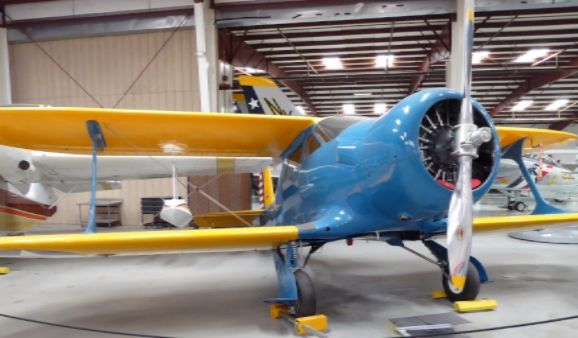
N3N-3 Yellow Peril
The Yellow Peril is a seaplane trainer which was originally produced in 1936. It has a top speed of 126 mph, cruises at 90 mph, and has a range of 470 miles. Used at the U.S. Naval Academy until 1961, this was the last American biplane used in military service.
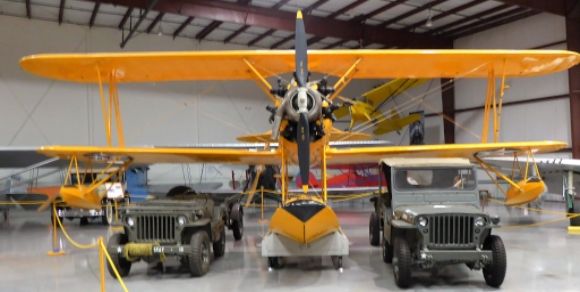
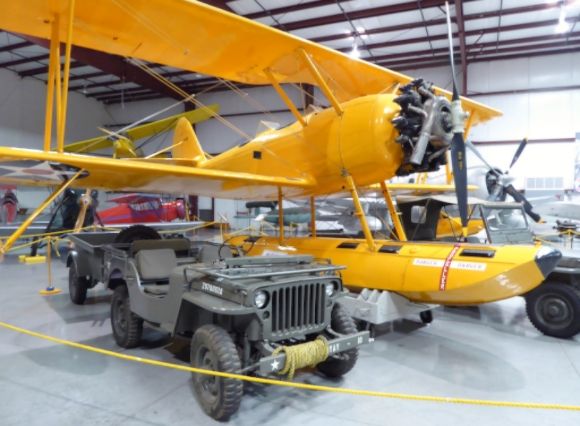
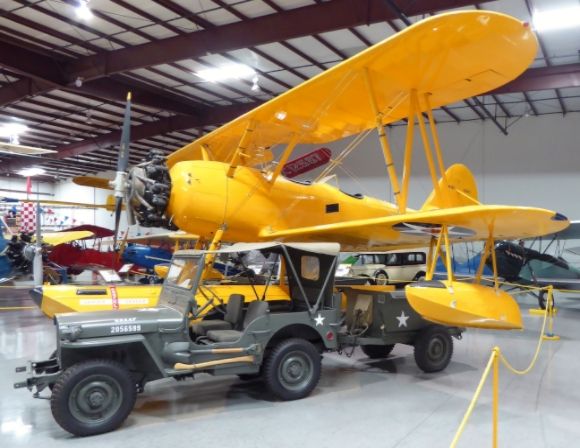
More Airplane Museums
Biplanes (Photo Diary)
Old Airplanes: 1910-1929 (Photo Diary)
Yanks Air Museum: World War II Fighters (Photo Diary)
Planes of Fame: P-38 Lightning (Photo Diary)
Museums 101: An Overview of the Port Townsend Aero Museum (Photo Diary)


